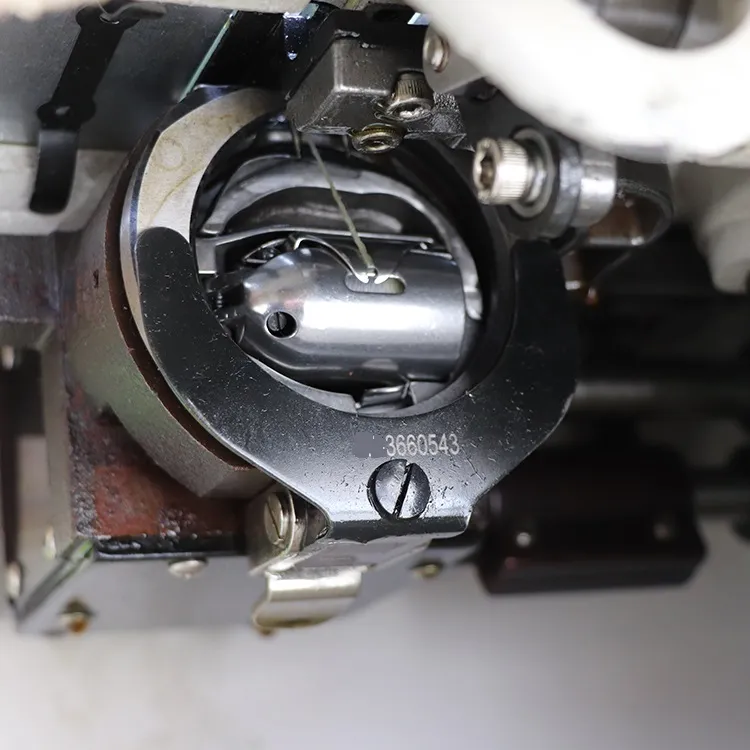High-Quality Overlock Machines for Efficient Garment Finishing and Professional Seam Solutions
The Importance of Garments Overlock Machines in Modern Apparel Production
In the fast-paced world of garment production, efficiency and quality are paramount. One of the essential machines that contribute to these factors is the overlock machine. Often referred to as a serger, this specialized sewing machine plays a vital role in the finishing processes of garments, ensuring both durability and aesthetics.
What is an Overlock Machine?
An overlock machine is designed to sew over the edge of one or two pieces of fabric, creating a clean, finished edge that prevents fraying. It typically features multiple threads, usually ranging from three to five, which enables it to cut the fabric while simultaneously stitching it. This unique capability not only enhances the strength of the seams but also offers a professional finish that is essential in the apparel industry.
The Role of Overlock Machines in Garment Production
1. Edge Finishing One of the primary functions of the overlock machine is to finish the edges of fabric pieces. Unfinished edges can easily fray and unravel, leading to garment deterioration. By using an overlock machine, manufacturers can ensure that edges remain intact, extending the life of the garment.
2. Seam Strength Overlock stitches are robust and flexible, making them ideal for seams that require a stretch, such as in knitwear. The ability to sew with multiple threads provides additional tensile strength, which is crucial for garments subjected to motion and wear.
garments overlock machine

3. Speed and Efficiency In a production environment, time is of the essence. Overlock machines are designed for speed, capable of sewing faster than conventional sewing machines. This efficiency is vital for meeting production deadlines and reducing labor costs in the competitive fashion industry.
4. Versatility Overlock machines can handle various types of fabrics, from lightweight knits to heavier woven materials. This versatility allows manufacturers to utilize a single machine for multiple garment types, simplifying the production process.
5. Aesthetic Appeal Beyond functionality, overlock machines contribute to the aesthetic quality of garments. They allow for the creation of decorative edges, rolled hems, and various stitch patterns that can enhance the visual appeal of a finished product. This capability is particularly important in fashion, where presentation plays a critical role in consumer buying decisions.
Innovations in Overlock Technology
With advancements in technology, modern overlock machines are becoming increasingly sophisticated. Features such as electronic controls, automated threading systems, and built-in stitch selectors make these machines easier to operate and more versatile. Additionally, some machines now offer specialized attachments that allow for unique stitch designs and finishing options, catering to the evolving demands of the fashion industry.
Conclusion
The overlock machine is a cornerstone of modern garment production, offering solutions that enhance both the quality and efficiency of manufacturing processes. As the apparel industry continues to evolve, embracing new technologies and practices, the significance of overlock machines will only grow. For garment manufacturers aiming to stay competitive, investing in high-quality overlock machines is not just an option; it’s a necessity. These machines not only ensure durability and style but also pave the way for innovative design and production techniques, ultimately shaping the future of fashion.
-
Leather Sewing Machine: The Industrial Standard for Tough MaterialsNewsJul.18,2025
-
Sail Making Machine: Heavy-Duty Stitching for Industrial and Marine NeedsNewsJul.18,2025
-
Sling Sewing Machine: The Backbone of Heavy-Duty FabricationNewsJul.18,2025
-
Leather Sewing Machine: Precision for Heavy-Duty StitchingNewsJul.18,2025
-
Big Bag Sewing Machine: Powering the Future of Bulk PackagingNewsJul.18,2025
-
FIBC Sewing Machine: Essential Equipment for Bulk Bag ProductionNewsJul.18,2025
-
Heavy Duty Leather Sewing Machine: A Must-Have for Professional LeatherworkNewsMay.28,2025





























